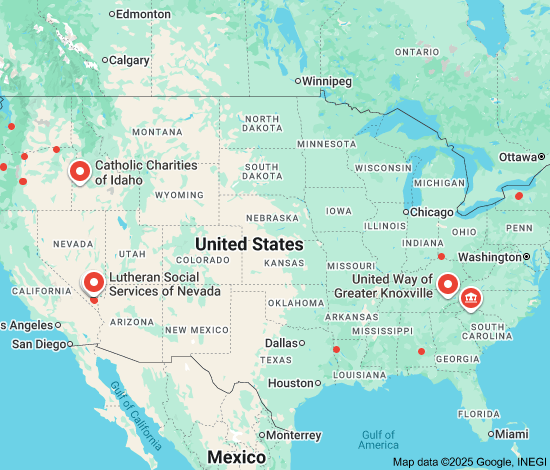The Power of Grassroots Movements
Grassroots movements play a crucial role in driving social change and shaping the future of communities. These movements are characterized by their bottom-up approach, where ordinary people come together to address issues that matter to them. Grassroots initiatives can be found in various fields, including politics, environmental activism, human rights advocacy, and more.
Key Characteristics of Grassroots Movements
Grassroots movements are often driven by passion and a shared sense of purpose among participants. They rely on community organizing, volunteer efforts, and local resources to effect change. Grassroots activists work tirelessly to raise awareness, mobilize support, and influence decision-makers at various levels.
Impact of Grassroots Movements
Despite lacking the financial resources and institutional backing of larger organizations, grassroots movements have proven to be incredibly effective in bringing about meaningful change. By engaging directly with communities and amplifying diverse voices, grassroots initiatives can spark conversations, challenge the status quo, and push for policy reforms.
Examples of Grassroots Success Stories
One notable example of a successful grassroots movement is the civil rights movement in the United States during the 1960s. Through nonviolent protests, sit-ins, and marches organized at the local level, activists were able to challenge segregation laws and advance racial equality nationwide.
In more recent times, environmental grassroots movements have gained momentum in response to climate change concerns. Youth-led initiatives like Fridays for Future have mobilized millions of people around the world to demand urgent action on environmental issues from governments and corporations.
Getting Involved in Grassroots Initiatives
If you are passionate about a cause or issue and want to make a difference in your community, consider getting involved in grassroots initiatives. You can start by connecting with local organizations, attending community meetings, volunteering your time or skills, or even launching your own grassroots campaign.
Remember that every voice matters in a grassroots movement. By working together with like-minded individuals towards a common goal, you can contribute to positive change and create a more inclusive and equitable society for all.
6 Essential Tips for Building Effective Grassroots Movements
- Engage with the local community to build relationships and trust.
- Identify key issues or concerns within the community to focus efforts effectively.
- Utilize social media and other communication channels to spread awareness and mobilize support.
- Collaborate with local organizations, businesses, and leaders to amplify impact.
- Empower individuals within the community to take ownership of projects and initiatives.
- Regularly evaluate progress and adapt strategies based on feedback from community members.
Engage with the local community to build relationships and trust.
Engaging with the local community is a fundamental aspect of grassroots initiatives. By actively building relationships and fostering trust within the community, grassroots movements can establish a strong foundation for collaboration and collective action. Through dialogue, listening, and mutual respect, activists can better understand the needs and perspectives of community members, creating a sense of unity and shared purpose that is essential for driving meaningful change at the grassroots level.
Identify key issues or concerns within the community to focus efforts effectively.
To maximize the impact of grassroots efforts, it is essential to identify key issues or concerns within the community that resonate with its members. By focusing on these pressing issues, grassroots movements can channel their energy and resources effectively, rallying support and driving meaningful change. Understanding the needs and priorities of the community ensures that efforts are targeted towards addressing real challenges and making a tangible difference in people’s lives.
Utilize social media and other communication channels to spread awareness and mobilize support.
Utilizing social media and other communication channels is a crucial strategy for grassroots movements to spread awareness and mobilize support effectively. Platforms like Facebook, Twitter, Instagram, and TikTok offer a powerful way to reach a wide audience, engage with supporters, and amplify the message of the movement. By creating compelling content, sharing updates, organizing virtual events, and leveraging online networks, grassroots activists can connect with like-minded individuals globally and inspire collective action towards their cause. Effective communication through digital channels can help drive momentum, build solidarity, and ultimately drive positive change in society.
Collaborate with local organizations, businesses, and leaders to amplify impact.
Collaborating with local organizations, businesses, and leaders is a strategic approach to amplify the impact of grassroots initiatives. By forming partnerships with established entities in the community, grassroots movements can leverage resources, expertise, and networks to reach a broader audience and effect change more effectively. Through collaboration, grassroots efforts can gain credibility, access new opportunities for support, and foster a sense of unity among diverse stakeholders working towards a common goal. Together, these collaborations strengthen the collective voice of the community and enhance the overall impact of grassroots movements on societal issues.
Empower individuals within the community to take ownership of projects and initiatives.
Empowering individuals within the community to take ownership of projects and initiatives is a key principle of grassroots movements. By fostering a sense of ownership, people are more motivated and committed to driving change from within. When community members feel empowered to lead and contribute their skills and ideas, they become invested in the success of the project, leading to greater impact and sustainability. This approach not only strengthens community bonds but also ensures that decisions reflect the needs and aspirations of those directly affected, ultimately fostering a more inclusive and participatory environment for positive transformation.
Regularly evaluate progress and adapt strategies based on feedback from community members.
Regularly evaluating progress and adapting strategies based on feedback from community members is essential for the success of grassroots initiatives. By actively listening to the voices and concerns of those directly impacted by the movement, organizers can fine-tune their approaches, address emerging challenges, and ensure that their efforts remain relevant and effective. This iterative process of feedback and adjustment not only strengthens community engagement but also fosters a sense of ownership and collaboration among all stakeholders involved in driving positive change.




